HMS Richmond has been conducting gunnery training as part of the ongoing Carrier Strike Group 25 (CSG25) deployment.
In a social media update, the Royal Navy warship stated: “More gunnery practice today. It’s all about controlled aggression. We’re sharp, we’re accurate, and we’re ready to respond.”
The exercise, conducted under the banner of Operation Highmast, highlights the importance of maintaining combat effectiveness during the Carrier Strike Group’s global mission.
More gunnery practice today. It’s all about controlled aggression. We’re sharp, we’re accurate, and we’re ready to respond.@COMUKCSG #RoyalNavy#Gunnery#OpHighmast#CSG25 pic.twitter.com/o5j0EM195J
— HMS Richmond (@HMS_Richmond) May 7, 2025
Operation Highmast is the UK’s headline global deployment for 2025, involving the Royal Navy’s Carrier Strike Group led by HMS Prince of Wales. The deployment aims to enhance interoperability with allied navies and demonstrate the UK’s commitment to global maritime security. The operation includes a series of multinational exercises and joint training missions, covering regions including the Mediterranean, Indo-Pacific, and other areas of strategic importance.
The Carrier Strike Group 25 consists of various assets, including surface combatants, a submarines and of course aircraft. The mission focuses on demonstrating power projection, conducting joint operations, and integrating modern capabilities with allied force structures.
HMS Richmond is a Type 23 frigate of the Royal Navy, commissioned in 1995. The vessel is equipped with the Type 2087 towed array sonar for anti-submarine warfare and Sea Ceptor air defence missiles. Richmond is designed for surface and subsurface warfare, as well as providing gunnery support during naval operations.
The ship forms part of the Royal Navy’s surface fleet and supports the Carrier Strike Group by conducting patrols, anti-submarine operations, and maritime security tasks. Regular gunnery practice is conducted to ensure the ship’s weapons systems are maintained in an operationally ready state.
Operation Highmast
Britain recently launched its most ambitious naval deployment in years as HMS Prince of Wales and the UK Carrier Strike Group embark on an eight-month mission under Operation Highmast. The deployment, spanning the Mediterranean, Middle East, and Indo-Pacific, marks a significant milestone for the Royal Navy and the United Kingdom’s commitment to global security.
Speaking during a media briefing aboard HMS Prince of Wales, Commodore James Blackmore, Commander of the UK Carrier Strike Group, told myself and other assembled journalists that the deployment is “a global deployment, international by design” that brings together warships and personnel from 13 nations.
You can watch the briefing here, enjoy!
“This is the declaration of full operating capability for the UK Carrier Strike Group,” said Blackmore. “It marks the culmination of eight years of progress – from flying trials to global deployments – and demonstrates that the UK now maintains a high-readiness carrier capability, always available.”
🚢 Key Objectives of Operation Highmast
Commodore Blackmore outlined three primary goals for the mission:
- Full Operating Capability (FOC): Confirming the strike group’s ability to deploy globally with modern aircraft, uncrewed systems, and advanced surface vessels.
- Commitment to NATO 2030: Reinforcing UK leadership within NATO through international exercises and coordination.
- Supporting Global Security & Prosperity: Enhancing regional stability and promoting a rules-based international order with key partners.
“We’ll operate with over 40 nations, from bilateral work with Singapore to major multi-carrier exercises in the Pacific with the US and Japan,” said Blackmore.
✈️ The Air Wing – UK’s Largest Modern Combat Air Package at Sea
The air wing embarked on HMS Prince of Wales will grow significantly during the deployment. Captain Colin McGannity, Commander Air Group, confirmed that:
- The mission begins with 18 UK F-35B Lightning II stealth fighter jets, operated by RAF 617 Squadron ‘The Dambusters’ and 809 Naval Air Squadron ‘The Immortals’.
- The number of F-35Bs will increase to 24 jets during the deployment, making it the largest ever operational deployment of British fifth-generation aircraft at sea.
“This is the most potent sovereign air power we’ve ever deployed. The capability of the F-35B is absolutely eye-watering,” said McGannity. “It’s a force multiplier in every sense.”
The air wing will also include:
- 16 UK helicopters, including Merlin Mk2s for anti-submarine warfare, Merlin Mk4 Commando variants, and Wildcat helicopters for armed reconnaissance.
- Three flights of drones, including Malloy T-150 heavy-lift drones and Puma surveillance UAVs.
“This deck will operate more aircraft than we’ve ever flown from a UK carrier,” added Blackmore. “More than any Illustrious-class carrier ever achieved.”
⚓ Strike Group Composition at Launch
The task group departs UK waters with the following naval assets:
- HMS Prince of Wales – Queen Elizabeth-class aircraft carrier (flagship)
- HMS Dauntless – Type 45 air defence destroyer
- HMS Richmond – Type 23 anti-submarine frigate
- RFA Tidespring – Tide-class replenishment tanker
- HMCS Ville de Québec – Canadian multi-role frigate
- HNoMS Roald Amundsen – Norwegian anti-submarine frigate
- HNoMS Maud – Norwegian support tanker
With more than 3,000 UK military personnel aboard the ships, the total number of people involved will rise to over 4,000 during the multinational phases of the deployment.
“It’s a truly international force, with contributions from Canada, Norway, Spain, and eventually France, Japan, Australia, Korea and more,” said Blackmore.
A Message to Allies – and Adversaries
Asked whether the high-profile deployment sends a message amid global instability, Blackmore replied:
“Absolutely. You don’t build a capability like this to keep it tied up alongside. You put it to sea to exercise, to partner with allies, and if necessary, to fight. It’s a powerful signal of resolve.”
And on whether this is a substitute for American carrier presence:
“Not at all,” he said. “We operate together. No one goes it alone anymore – interoperability is key, and that’s what we’re proving here.”
Operation Highmast demonstrates Britain’s growing role as a maritime power with global reach, backed by next-generation jets and a multinational coalition. For the sailors, aviators, and marines aboard HMS Prince of Wales, it’s history in the making.


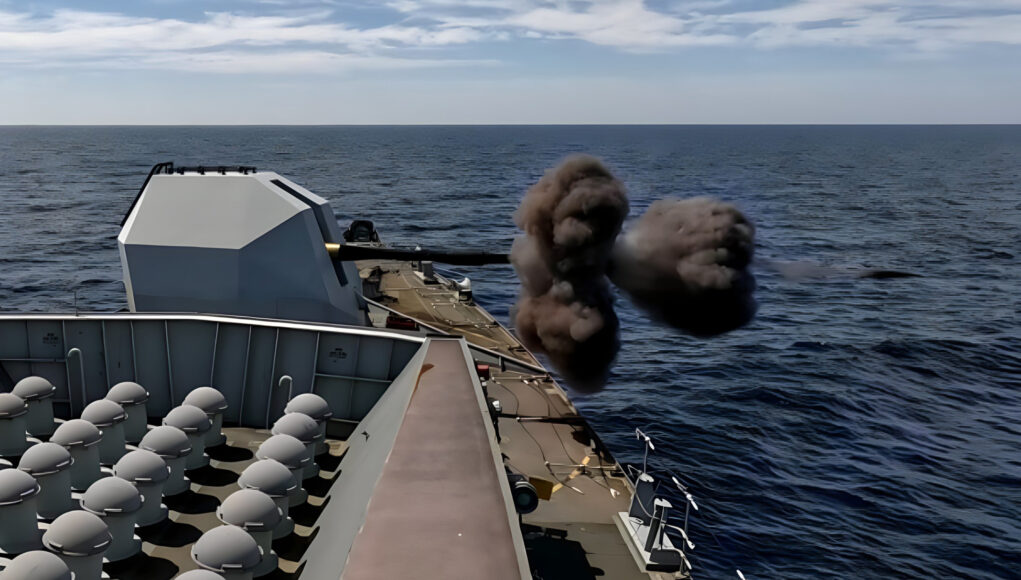



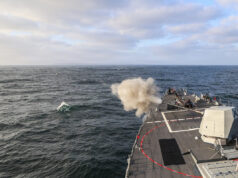
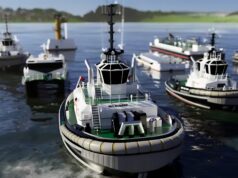
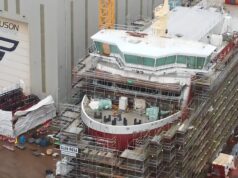
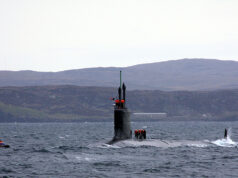
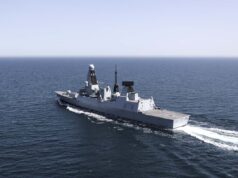

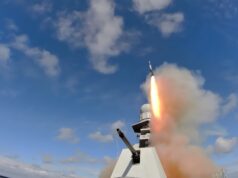

Nobody goes it alone? Be honest we can’t go it alone. Mainly because of the embarrassing size of our navy. Worse still, we may have to go it alone in some situations.
So it was HMS Richmond that announced the new pope!
“Call that a Gun”?, “This is a Gun”.
Michael J Dundee, @1986.
Have the mk10 guns had their air defence capability reinstated? It seemed after a type 45 destroyer returned from Red Sea duties they’d used their main guns Vs inbound drones.
No way. Seriously ?
A RN ship…..opens fire ?
Geoffi, I wonder when the last time was that the RN fired a gun in anger?